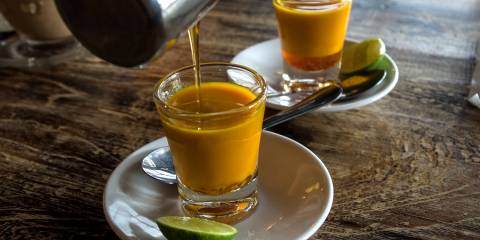While most of us will acknowledge that change is good, it’s also true that some things are perfect just the way they are. So it goes with purple corn (Zea mays L.), a powerfully nutritious crop that can trace its roots all the way back to the ancient Aztec civilization.
Ancient Grains
Archaeologists theorize that maize (another name for corn) was an integral part of the development of the remarkable blossoming of culture that occurred in Peru more than 5,000 years ago. Excavations of ancient sites have provided evidence that, just like in other parts of the world, agriculture—specifically, maize—was a key factor in the emergence of the great South American civilizations.
Better Than Blueberries!
Purple corn, known locally as maíz morado or kculli, is still grown today in the Andean valleys of Peru, where locals enjoy it prepared in a refreshing drink made from the whole corn and cob. While it may be fabulous in drinks and desserts, purple corn also has amazing health-boosting properties thanks to its brilliant jewel-toned hue. Although they share a deep, rich color, purple corn bests superfood blueberries in antioxidant capacity, making it one of the world’s best sources of free-radical fighting anthocyanins (flavonoids).
Drink It Daily
The good news is that you don’t have to travel to Peru to reap the benefits of this plant. Purple corn extract is available at many natural health retailers in the US. Purple corn extracts and powders are the perfect way to add nutrients and antioxidants to your favorite drink or smoothie recipe.
Here are some more fun facts about this colorful crop:
- Purple corn is the same species as the corn we are familiar with, but the more colorful varieties have higher levels of cell-protecting antioxidants.
- Anthocyanins in purple corn may lower blood pressure in those with mild-to-moderate hypertension, regardless of age, gender, and body mass.
- The purple pigment demonstrates anti-inflammatory capabilities and may impede the development of colon cancer.
- Purple corn has been shown to reduce type 2 diabetes risk, and may help slow kidney damage and disease caused by diabetic nephropathy.
- Researchers at the University of Illinois are working on developing safe, natural food dyes derived from purple corn to replace synthetic versions.




